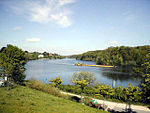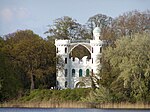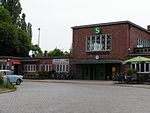The Wannsee Conference (German: Wannseekonferenz, German pronunciation: [ˈvanseːkɔnfeˌʁɛnt͡s] (listen)) was a meeting of senior government officials of Nazi Germany and Schutzstaffel (SS) leaders, held in the Berlin suburb of Wannsee on 20 January 1942. The purpose of the conference, called by the director of the Reich Security Main Office SS-Obergruppenführer Reinhard Heydrich, was to ensure the co-operation of administrative leaders of various government departments in the implementation of the Final Solution to the Jewish question, whereby most of the Jews of German-occupied Europe would be deported to occupied Poland and murdered. Conference participants included representatives from several government ministries, including state secretaries from the Foreign Office, the justice, interior, and state ministries, and representatives from the SS. In the course of the meeting, Heydrich outlined how European Jews would be rounded up and sent to extermination camps in the General Government (the occupied part of Poland), where they would be killed.Discrimination against Jews began immediately after the Nazi seizure of power on 30 January 1933. Violence and economic pressure were used by the Nazi regime to encourage Jews to voluntarily leave the country. After the invasion of Poland in September 1939, the extermination of European Jewry began, and the killings continued and accelerated after the invasion of the Soviet Union in June 1941. On 31 July 1941, Hermann Göring gave written authorization to Heydrich to prepare and submit a plan for a "total solution of the Jewish question" in territories under German control and to coordinate the participation of all involved government organisations. At the Wannsee Conference, Heydrich emphasised that once the deportation process was complete, the fate of the deportees would become an internal matter under the purview of the SS. A secondary goal was to arrive at a definition of who was Jewish.
One copy of the Protocol with circulated minutes of the meeting survived the war. It was found by Robert Kempner in March 1947 among files that had been seized from the German Foreign Office. It was used as evidence in the Subsequent Nuremberg Trials. The Wannsee House, site of the conference, is now a Holocaust memorial.











